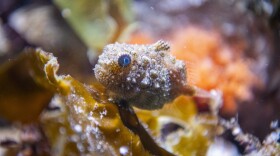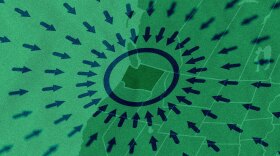http://stream.publicbroadcasting.net/production/mp3/kplu/local-kplu-968605.mp3
Seattle researchers have created a new way to fight the flu virus, and potentially pave the way for a new class of medicines.
You probably remember how the flu pandemic two years ago eventually included such a scramble to get the vaccine that people stood in long lines -- and even lied about the ages of their children to get it earlier. It takes months to make influenza vaccine, which has to be grown in chicken eggs. And every year the whole process has to start over, as the virus keeps mutating and evolving. It turns out the virus needs to hook onto cells inside your body, using tiny protuberances that act like handles, says Sarel Fleishman, a biochemist at the University of Washington and part of the team that created a new way to attack the flu bug. The "handles" tend to stay the same even when the virus evolves.
If you can attach something else to those handles, you can disable the virus. But that’s really hard to do.
- The "handles" are a three-dimensional tangle of molecules;
- they're too tiny to see in a microscope;
- and each segment has its own positive or negative charge, like a magnet.
"The key is to understand that molecular surfaces are not flat. There are crevices, and there are bulges at the atomic level, so there are undulating lines on these surfaces," says Fleishman.
To block the virus, you have to match the precise shape of these handles. It’s a super complicated, three-dimensional puzzle piece.
That’s where this U.W. lab, led by David Baker, has entered uncharted territory. They created a computer program that can design protein molecules from scratch. It takes thousands of computers working in tandem (making use of volunteers who shared their home computers during hours when they're not in use).
The computers eventually spit out a blueprint. From that, they figured out what DNA you’d need to make it in real life. They mail-ordered the DNA and grew it in petri dishes, using yeast. After trying 80 different versions, they found two that finally latched onto the flu virus.
"It's clear now that one can make these things that don’t exist anywhere in nature, make them up on a computer, and that they can have new and useful functions," says Baker.
So far, this is just a proof of an idea. It’s a long way from being tested in living creatures. The same technique could be used, though, to fight other viruses. Currently, Baker is working on Ebola and measles. Baker also says he’d like to design a specialized molecule that could improve bio-fuels. The study is published in the journal Science.







